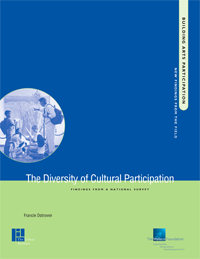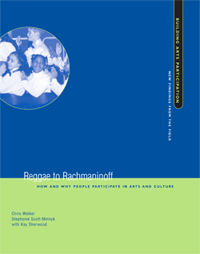Visual arts
2010, 48 pages, The Urban Institute, 2100 M Street NW, Washington, D.C., 20037, (202) 833-7200 http://www.urban.org
Download:
![]() The Diversity of Cultural Participation: Findings from a National Survey (299Kb)
The Diversity of Cultural Participation: Findings from a National Survey (299Kb)
"While arts organizations are skilled at devising creative ways to pursue audience engagement, choosing the right strategy for the right circumstances can be guesswork," writes Michael Moore, director of the The Wallace Foundation's arts program.
Read More...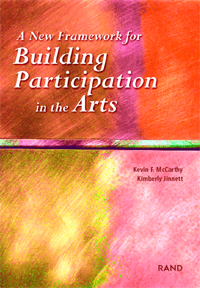
This landmark RAND study offers arts providers a methodical way to avoid hit-and-miss audience-building efforts that waste scarce resources and arrive instead at more clear-headed, effective strategies.
Read More...We may go to the opera, live theater, or the symphony, but we don't stop to really think about how much these performances can mean to our daily lives and to our communities. Those performing arts organizations have been concentrating on this issue for years.
Read More...2010, 72 pages, The Urban Institute, 2100 M Street NW, Washington, D.C., 20037, (202) 833-7200 http://www.urban.org
Download:
![]() Reggae to Rachmaninoff (397Kb)
Reggae to Rachmaninoff (397Kb)
Arts Wisconsin, the Wisconsin Arts Board, and Americans for the Arts are happy to announce the republication of the landmark 1969 book, The Arts in the Small Community, by Maryo Gard Ewell and Michael F. Warlum. The new guide stays true to its original roots and mission set forth by Wisconsin's community arts pioneer Robert Gard, but has been thoroughly updated to address contemporary examples in the realm of community arts.
Read More...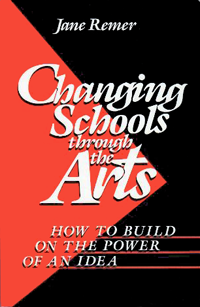
This book offers insight into how to establish the arts in schools and use them as a vehicle for school renewal at the same time. The author makes a convincing case for the important role of visual arts, music, dance, drama, and architecture in educating our youth.
284 pp, paperback (1990, Americans for the Arts)
Read More...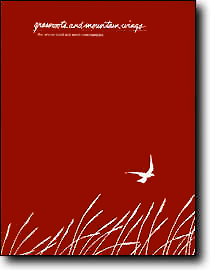
This timeless resource helps identify and define the philosophical foundations and practice principles of community arts development. It captures and shares the creative and pioneering efforts that drive the movement and provides insight and expertise for people working in rural and small communities.
135pp, paperback (1992, Center for Community and Cultural Studies, Columbia College)
Read More...In the past two years, several prominent foundations at national, regional, and local levels have appointed new presidents. Such leadership transitions are likely to increase in the years ahead in keeping with the larger generational shift in the nonprofit sector. Very few of the new foundation leaders are likely to come from the arts sector, and many will have had little direct experience with our field.
Read More...
